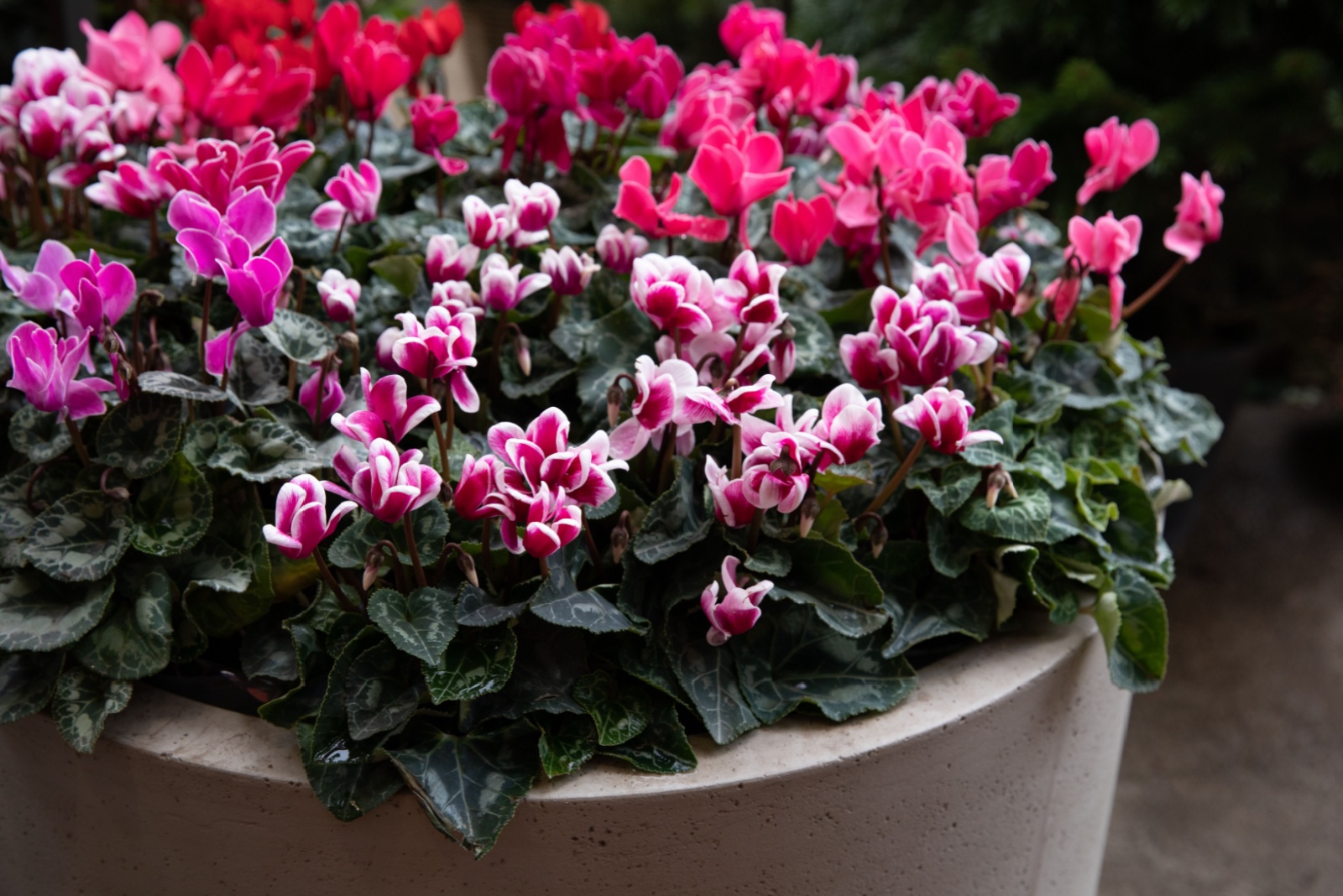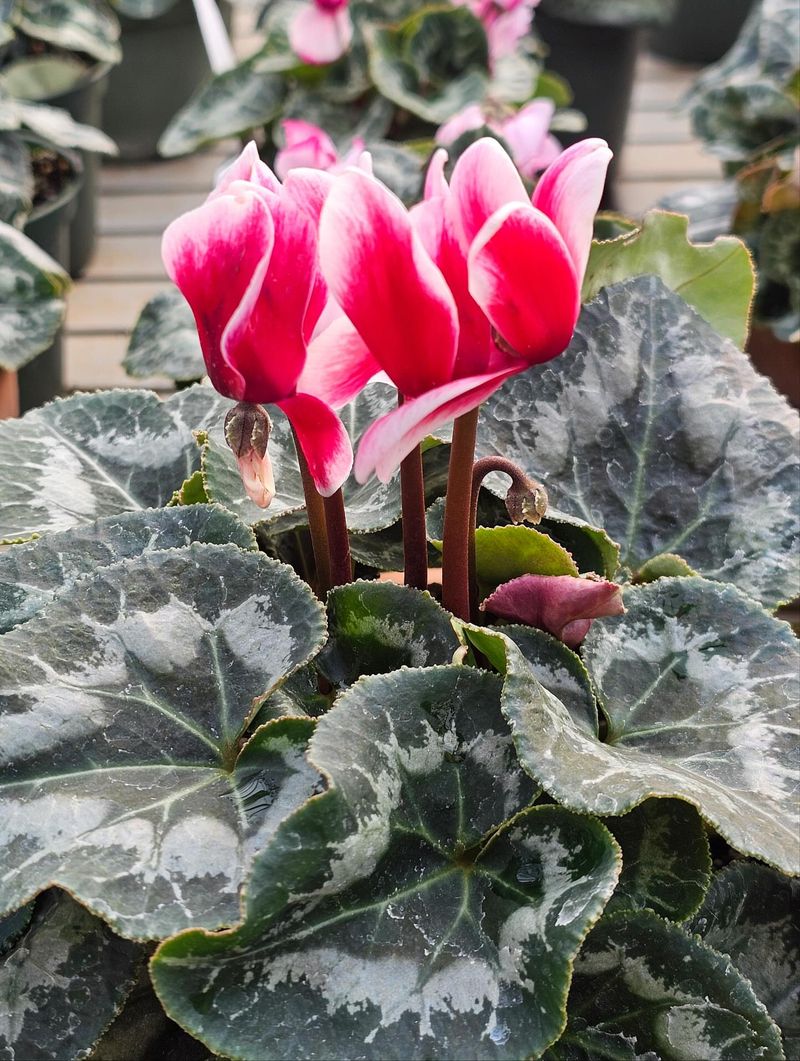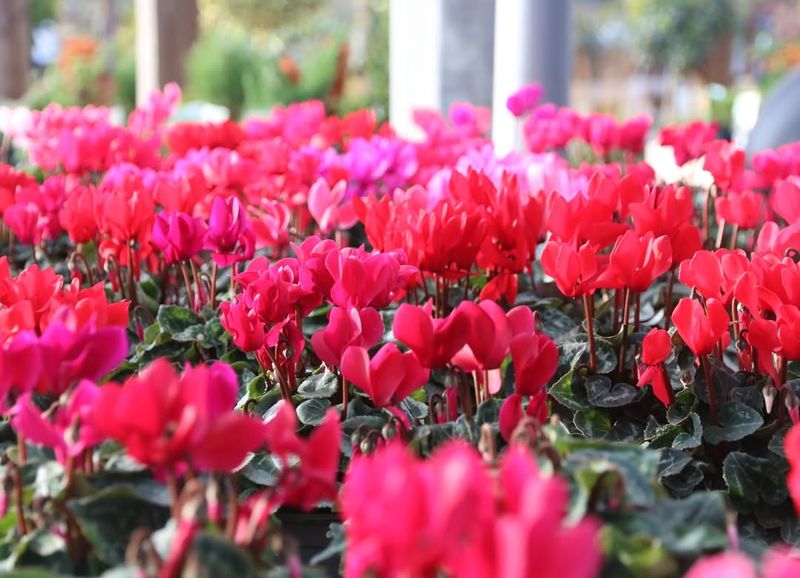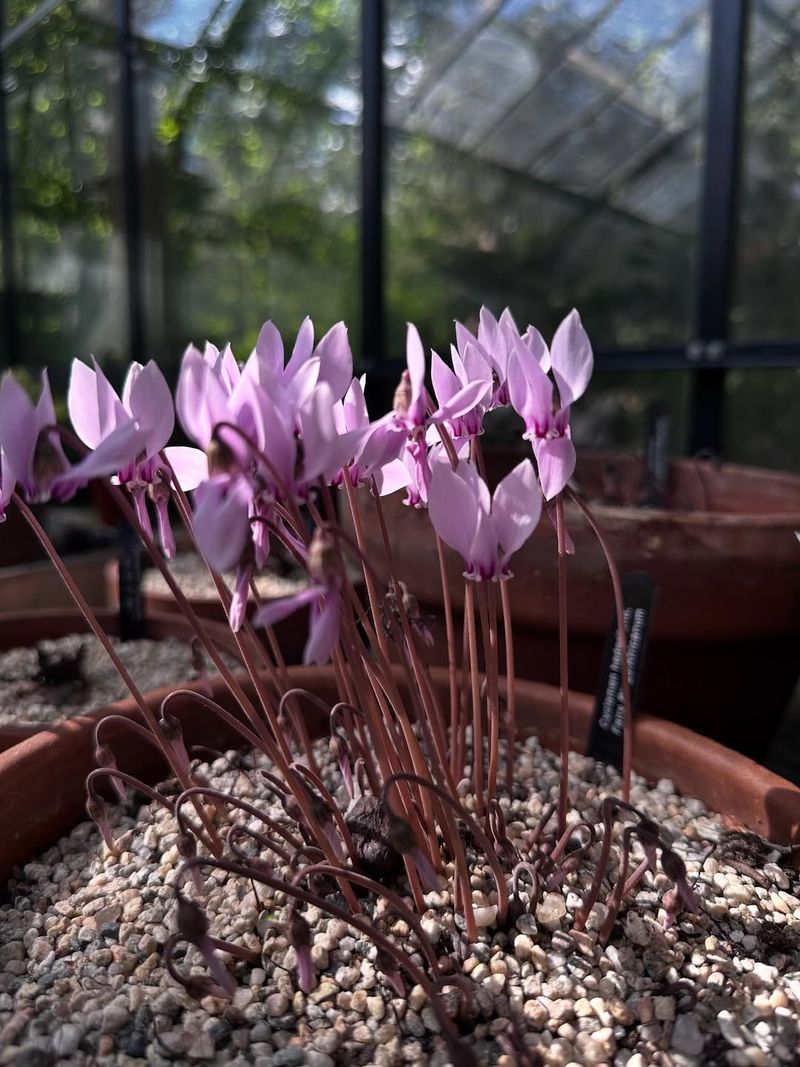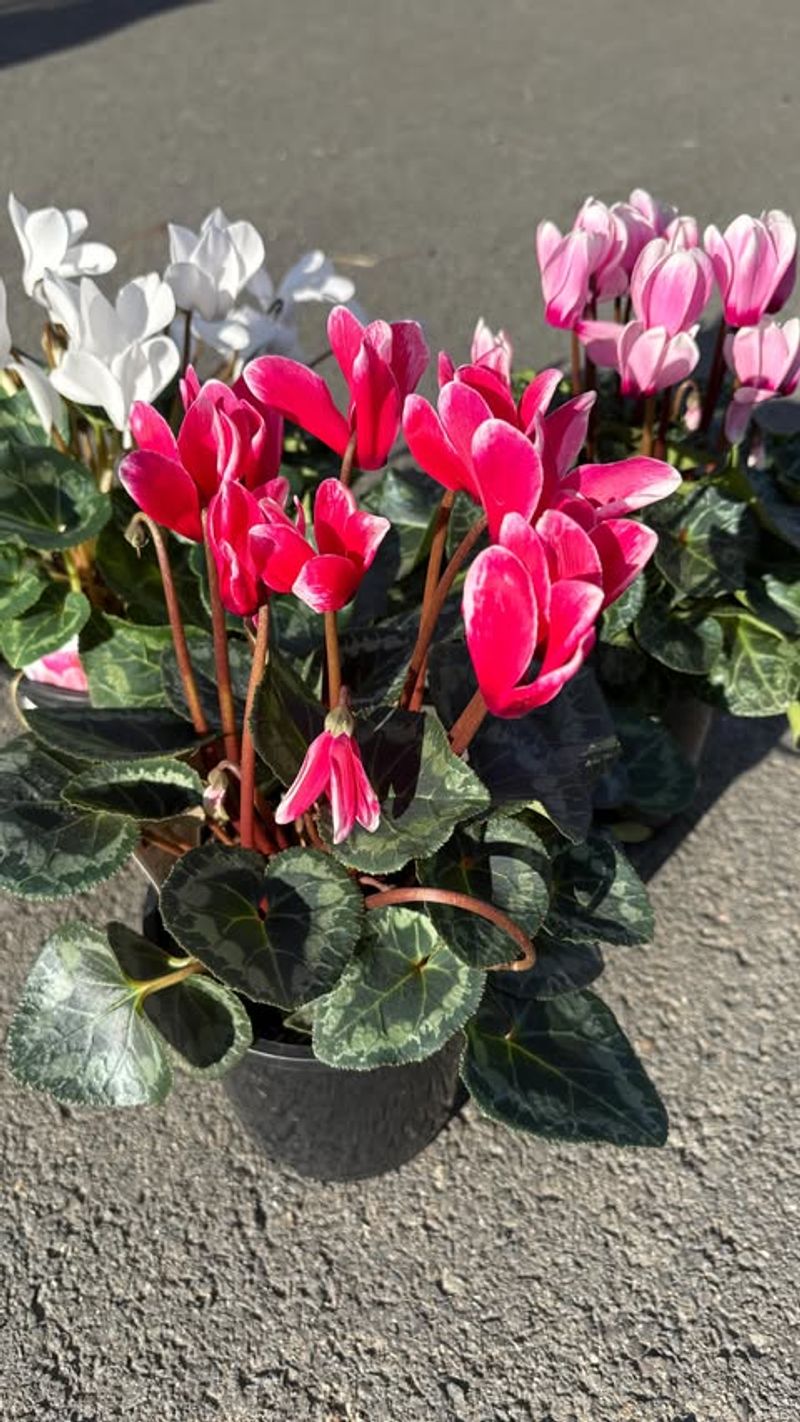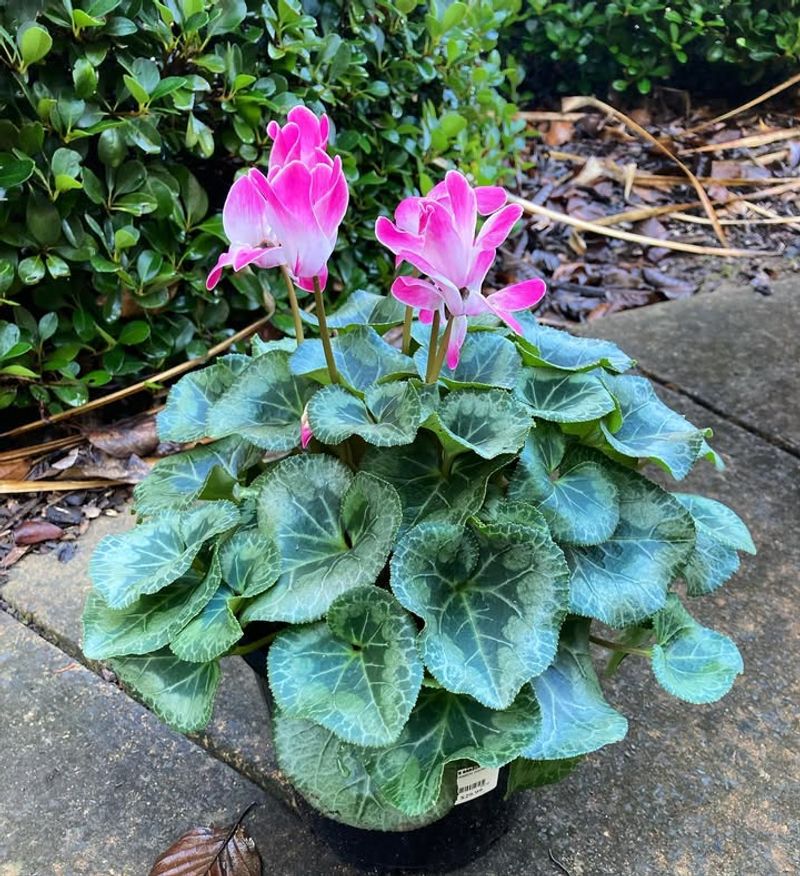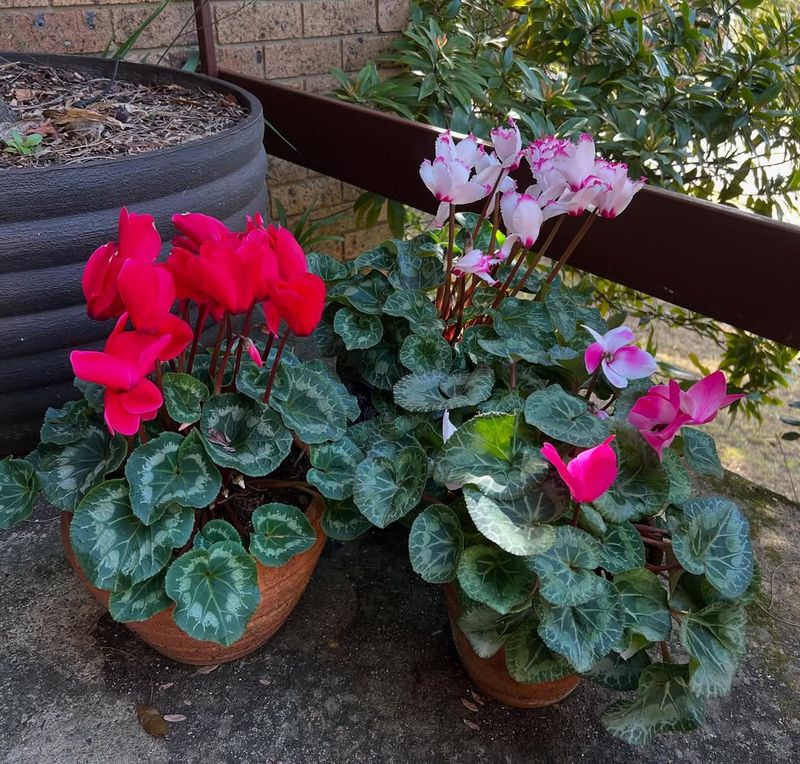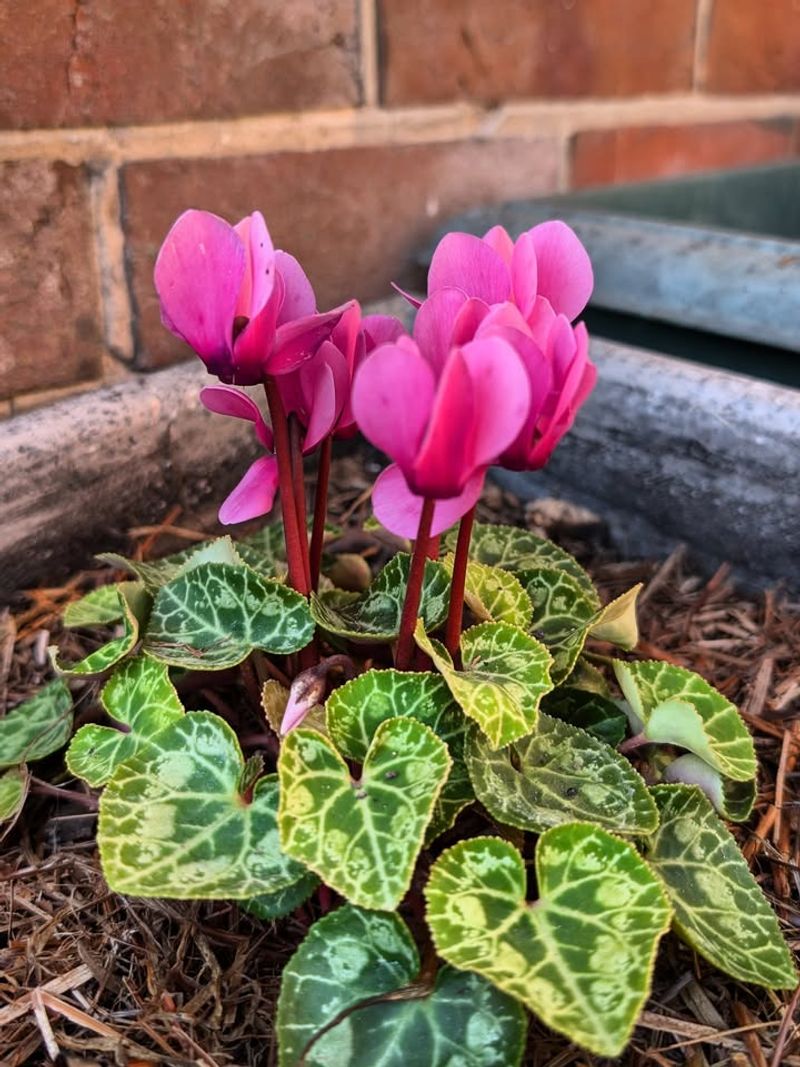Cyclamen may look delicate, but in Arizona’s mild winters they can put on a show that stops visitors in their tracks—if you plant them the right way.
Too many gardeners fall into the same traps, giving these cool-loving flowers heat stress, poor soil, or the wrong spot entirely.
With just a few tweaks, cyclamen can thrive through winter and deliver bold color when the rest of the garden is catching its breath. Avoiding these common mistakes is the key to keeping them blooming beautifully all season long.
1. Planting Too Deep In The Soil
Burying cyclamen tubers too far down ranks among the most common ways to destroy these plants before they even start. The crown needs to sit right at soil level or even slightly above it.
When you cover the top completely, water pools around the tuber and causes rot. Think of it like planting a potato with its eyes facing down – it just won’t work right.
Leave about a third of the tuber exposed above ground for best results.
2. Choosing Full Sun Locations
Arizona sun packs way more punch than cyclamen can handle, even during winter months. These Mediterranean natives prefer dappled shade or morning sun with afternoon protection.
Full sun exposure bleaches their leaves and makes flowers fade faster than ice cream melts in July. Your plants will look stressed and sad instead of vibrant and healthy.
Plant them under trees, on north-facing walls, or anywhere that gets filtered light throughout the day.
3. Overwatering The Plants
More cyclamen wither from too much water than from drought. Their tubers act like sponges, storing moisture for dry periods ahead.
When soil stays constantly wet, the tuber rots from the inside out. You’ll notice yellow leaves, mushy stems, and a general collapse of the plant.
Water only when the top inch of soil feels dry to your finger. During Arizona’s mild winters, that might mean watering just once or twice weekly.
4. Using Heavy Clay Soil
Clay soil in many Arizona yards holds water like a bathtub, creating perfect conditions for tuber rot. Cyclamen demand quick-draining soil that lets excess moisture escape fast.
Heavy soil also prevents delicate roots from spreading properly. Your plants stay stunted and never develop the lush growth you’re hoping for.
Mix in plenty of perlite, pumice, or coarse sand to lighten things up. Adding compost helps too, giving both drainage and nutrition.
5. Planting During Hot Weather
Dropping cyclamen into the ground during Arizona’s scorching summer months is basically asking them to fail. These cool-season performers need temperatures below 70 degrees to establish roots properly.
Heat stress prevents root development and can cook tubers right in the ground. Wait until October or November when nights cool down and days become pleasant.
Early fall planting gives roots time to grow before flowers appear in winter.
6. Ignoring Proper Spacing
Cramming cyclamen together might seem like a good way to create instant fullness, but it backfires quickly. Crowded plants compete for nutrients, water, and light, leaving everyone weaker.
Poor air circulation between packed plants also invites fungal diseases and pest problems. Leaves stay damp longer, creating perfect conditions for trouble.
Space plants six to eight inches apart, giving each one room to spread out and show off properly.
7. Fertilizing Too Heavily
Dumping fertilizer on cyclamen like they’re hungry teenagers rarely ends well. These plants are light feeders that prefer lean conditions over rich, heavy nutrition.
Too much fertilizer burns roots and pushes leafy growth at the expense of flowers. You end up with a green bush instead of colorful blooms.
Apply a diluted liquid fertilizer every three to four weeks during active growth. Skip feeding completely once flowering begins for best bloom production.
8. Watering From Above
Spraying water over cyclamen leaves and flowers might seem natural, but it causes multiple problems. Wet foliage encourages fungal diseases that spread quickly in cool, damp conditions.
Water sitting on the crown also promotes rot at the most vulnerable spot on the plant. Flowers get spotted and damaged, losing their beauty fast.
Always water at soil level, directing moisture to roots while keeping leaves and tubers dry. Drip irrigation or soaker hoses work perfectly.
9. Forgetting About Frost Protection
Arizona gardeners sometimes assume winter means no frost worries, but surprise cold snaps do happen. Cyclamen handle cool temperatures beautifully but struggle when the thermometer dips below freezing.
Frost damages flowers first, turning them brown and mushy overnight. Leaves can also suffer, especially on young plants without established root systems.
Cover plants with frost cloth when temperatures threaten to drop below 32 degrees. Remove coverings during the day to prevent overheating.
10. Planting Old Or Dried Tubers
Grabbing bargain tubers at the end of the season rarely saves money in the long run. Dried, shriveled, or old tubers lack the energy reserves needed to produce strong growth and flowers.
You can tell a healthy tuber by its firm texture and plump appearance. Soft spots, mold, or extreme dryness signal problems ahead.
Buy tubers from reputable sources in early fall when stock is fresh. Plant them soon after purchase for best results.

